Meteorites have long fascinated people with their extraterrestrial origins and their potential to hold clues about the formation of our solar system. Over the centuries, many meteorites have fallen to Earth, some of which have become famous for their size, composition, and impact on history.
In this article, we will explore the 10 most famous meteorites in history. From the Hoba meteorite, the largest-known single meteorite piece on Earth, to the Allende meteorite, which contains some of the oldest materials in the solar system, these meteorites have captured the attention and imagination of scientists and the public alike.
By examining these meteorites and their stories, we can gain a better understanding of the history and composition of our solar system, as well as the impact that these extraterrestrial objects have had on our planet and our culture. Join us as we delve into the fascinating world of meteorites and explore the most famous examples of these cosmic visitors to Earth.
10 Most Famous Meteorites
1. Hoba Meteorite
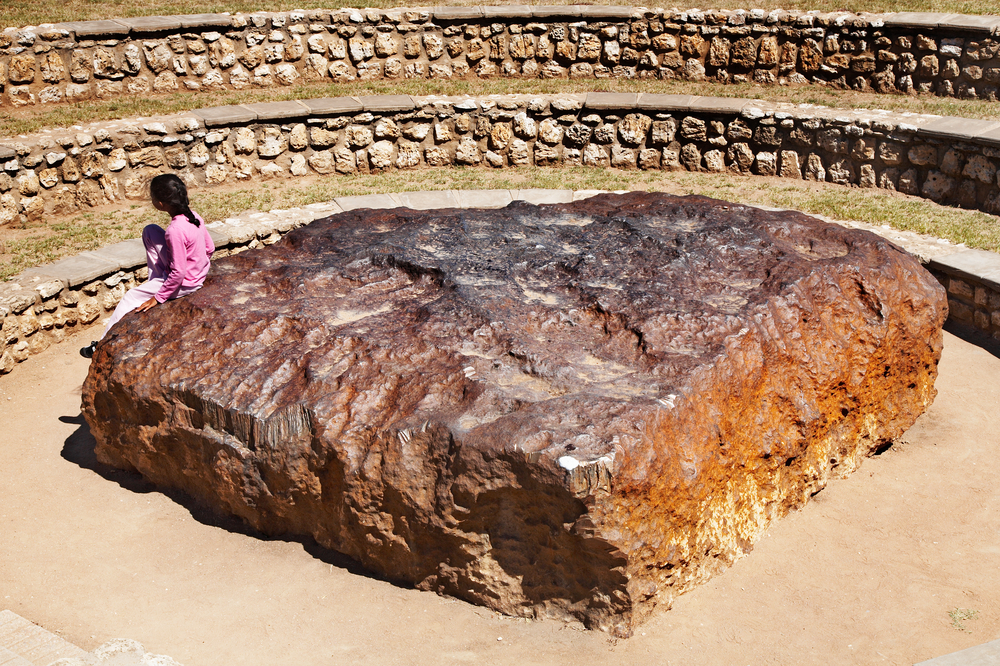
The Hoba Meteorite is one of the most famous meteorites in history due to its massive size and unique characteristics. It is the largest single meteorite ever found on Earth and the largest piece of iron ever found near the Earth’s surface. The meteorite is tabular in shape and measures approximately 2.7 meters (9 feet) across, 9 feet wide, and 3 feet thick. It is estimated to weigh nearly 60 tons and is made of an alloy of iron and nickel.
The Hoba Meteorite was discovered on a farm named Hoba West, not far from Grootfontein in the Otjozondjupa Region of Namibia. It is believed to have fallen to Earth nearly 80 million years ago. The farmer who discovered the meteorite initially thought that it was a large piece of lead, but after uncovering more of it, he realized that it was something much more unusual. The meteorite has never been moved from where it fell because of its large mass.
The Hoba Meteorite is a significant scientific and historical artifact. It provides valuable insight into the composition of meteorites and the formation of our solar system. The meteorite is also a popular tourist attraction and has been visited by many people from around the world.
2. Sikhote-Alin Meteorite
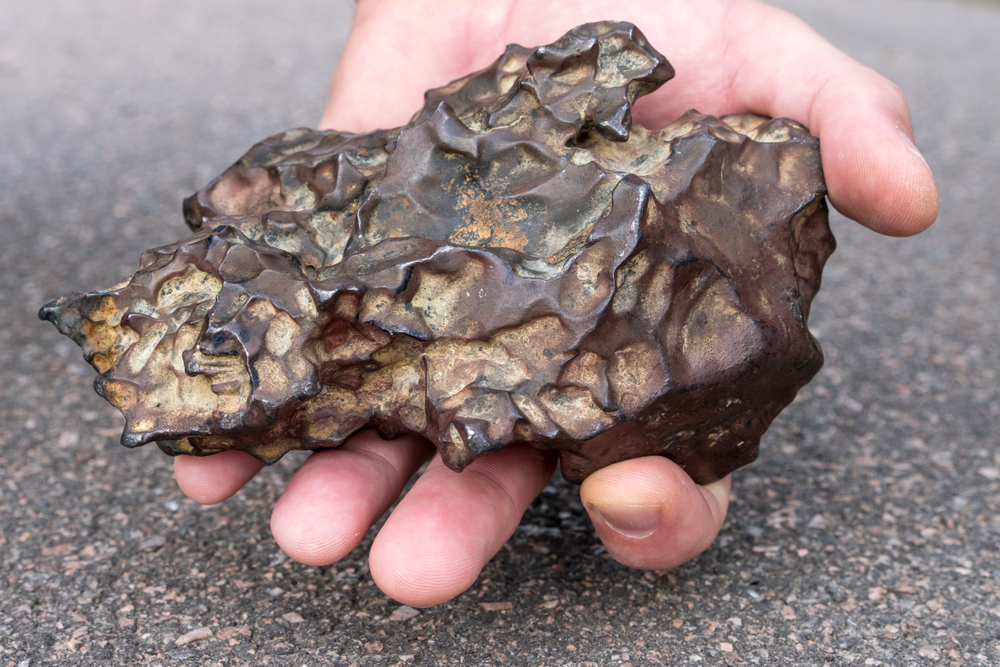
The Sikhote-Alin meteorite is classified as an iron meteorite belonging to the meteorite group IIAB and with a coarse octahedrite structure. The meteorite is composed of approximately 93% iron, 5.9% nickel, 0.42% cobalt, 0.46% phosphorus, and 0.28% sulfur, with trace amounts of germanium and iridium.
The Sikhote-Alin meteorite fell spectacularly at 10:38 AM, February 12, 1947, in the Sikhote-Alin Mountains, northeast of Vladivostok, Russia. Witnesses to the fall saw a fireball brighter than the sun, that appeared from the North and then exploded violently at the very low altitude of ~3.5 miles.
The explosion caused a shock wave that was felt over an area of about 115 miles², and the sound of the explosion was heard up to 186 miles away. Scientists estimate that the Sikhote-Alin meteorite had a mass of approximately 220,000 lbs before it entered Earth’s atmosphere.
The meteorite left impact craters, some as big as 85 feet across and 20 feet deep and fragments were scattered over an area of about 1.3 square miles. The Sikhote-Alin meteorite is highly valued by collectors and researchers alike. It is one of the most studied meteorites in history, and its study has provided valuable insights into the formation and evolution of the solar system.
3. Allende Meteorite
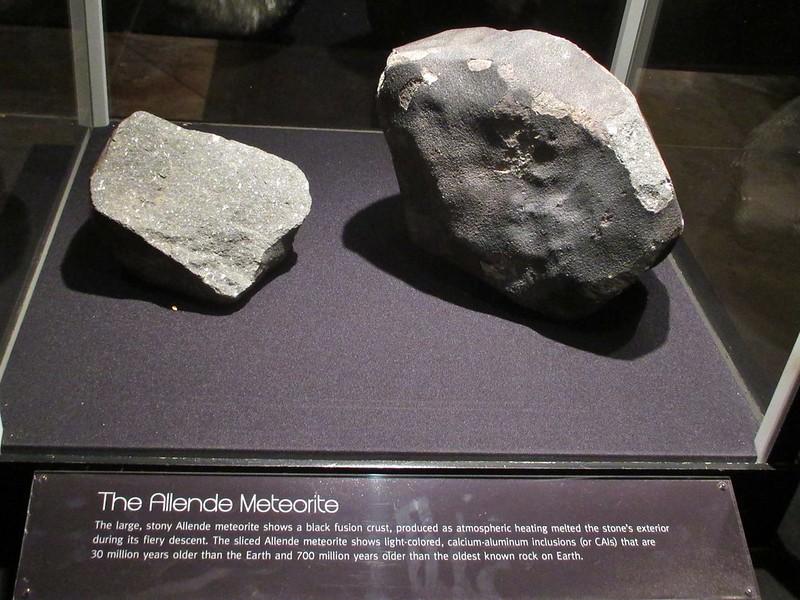
The Allende Meteorite is one of the most famous meteorites in history. It is a carbonaceous chondrite meteorite that fell on February 8, 1969, in the Mexican state of Chihuahua. The fireball was witnessed by many people, and over 2 tonnes (2.2 tons) of fragments were recovered.
The Allende Meteorite is particularly famous for its unique composition. It contains thousands of tiny chondrules made of the mineral olivine, which are thought to be some of the oldest materials in the solar system. It also has grains of a special kind of carbon, including diamonds. Scientists believe that the Allende Meteorite is a remnant from the early solar system, and studying it has provided valuable insights into the formation of our solar system.
The Allende Meteorite is also notable for its size. It is the largest carbonaceous chondrite ever found on Earth. Scientists have been studying the Allende Meteorite since it was discovered, and it remains an important object of study today.
4. Canyon Diablo Meteorite
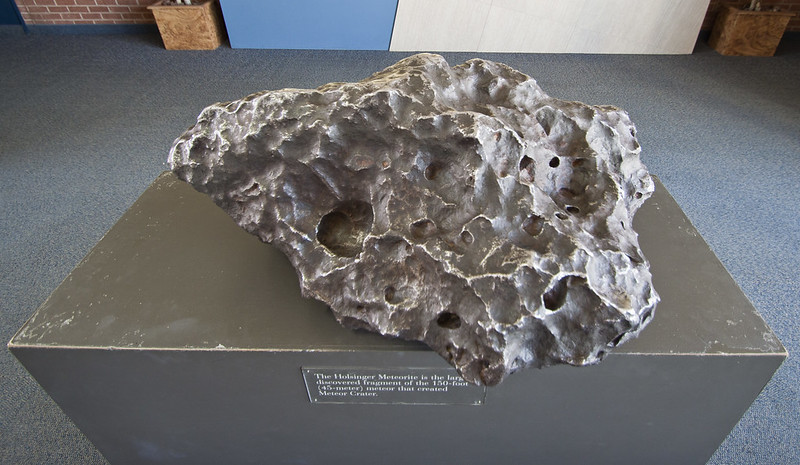
Canyon Diablo Meteorite is one of the most famous meteorites in history. It is an iron octahedrite meteorite that was found in the Canyon Diablo crater in Arizona. The meteorite is estimated to be about 4.5 billion years old, which is the same age as the solar system. It is named after the canyon where it was found, which is located about 3 to 4 miles west of the Meteor Crater.
The Canyon Diablo meteorite impacted the Earth about 50,000 years ago, creating the Meteor Crater. The crater is about 4,000 feet wide and 600 feet deep. The impact of the meteorite excavated the crater, lifting up 175 million tons of sandstone and limestone, and tossing much of it outside the crater. The crater is one of the world’s best-preserved meteorite impact craters.
The Canyon Diablo meteorite has been extensively studied, and many minerals have been reported from the meteorite. These minerals include cohenite, chromite, daubréelite, diamond and lonsdaleite, graphite, haxonite, and kamacite iron nickel alloy. The meteorite is also known for its high content of nickel and iron, which makes it valuable for scientific research and industrial applications.
Today, the Canyon Diablo meteorite is an important part of many meteorite collections around the world. Tens of thousands of Canyon Diablo meteorite fragments were found at the Meteor Crater, and most of them were much smaller than the 200-kilogram (440-pound) sample that is on display at the American Museum of Natural History.
5. Chelyabinsk Meteorite
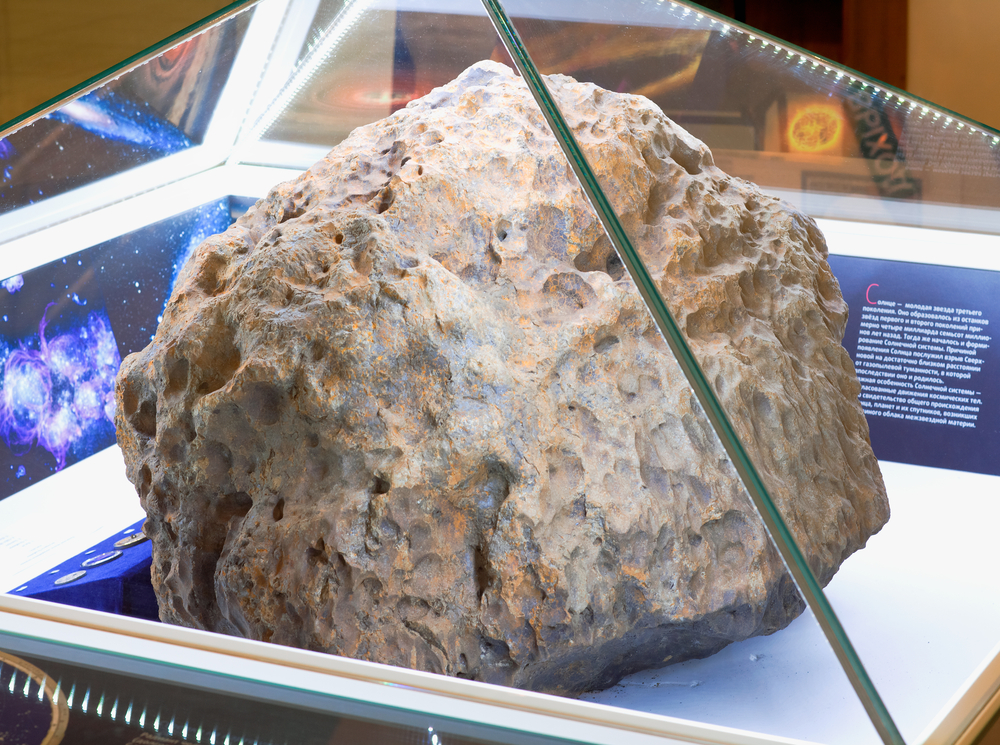
The Chelyabinsk Meteorite is one of the most famous meteorites in history. It is the fragmented remains of a large meteor that exploded over the Russian city of Chelyabinsk on February 15, 2013. The explosion was so powerful that it caused damage to buildings and injured more than 1,000 people.
The Chelyabinsk Meteorite is estimated to have been about 20 meters wide and to have weighed around 10,000 tons. It entered the Earth’s atmosphere at a speed of about 19 kilometers per second and exploded at an altitude of about 25 kilometers. The explosion released energy equivalent to about 500 kilotons of TNT, making it the most powerful meteor explosion since the Tunguska event in 1908.
The Chelyabinsk Meteorite is of great scientific interest because it is a rare type of meteorite called a LL5 chondrite. This type of meteorite is believed to be one of the oldest and most primitive materials in the solar system, dating back to the formation of the planets. Scientists have been studying the Chelyabinsk Meteorite to learn more about the early solar system and the processes that led to the formation of the planets.
The Chelyabinsk Meteorite has also been the subject of much interest from the general public. The explosion was captured on numerous videos and photographs, and it quickly became a viral sensation on social media. The event has been the subject of several documentaries and news programs, and it has sparked renewed interest in the study of meteorites and their impact on Earth.
Overall, the Chelyabinsk Meteorite is an important and fascinating object that has captured the imagination of people around the world. Its impact on the Earth and its scientific significance make it a worthy addition to any list of the most famous meteorites in history.
6. Tunguska Meteorite
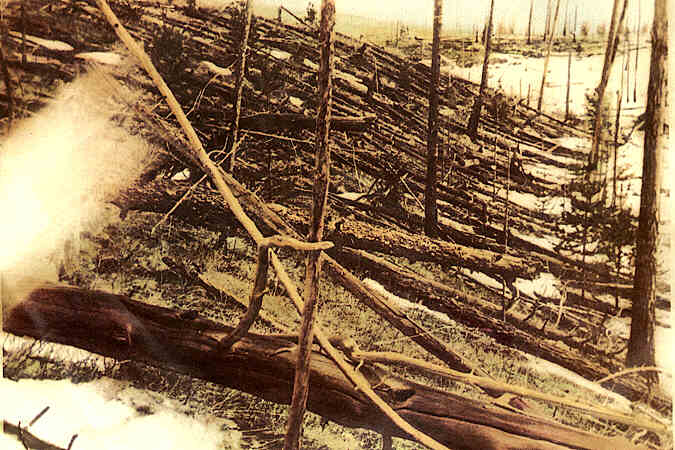
The Tunguska Meteorite, also known as the Tunguska Event, is one of the most mysterious and fascinating meteorite events in history. On June 30, 1908, a massive explosion occurred in the skies above the Tunguska River in Russia. The explosion was so powerful that it flattened trees and destroyed buildings over an area of 2,000 square kilometers. It is estimated that the explosion was equivalent to the detonation of 10-15 megatons of TNT, making it one of the most powerful explosions in history.
Despite extensive research and investigation, the cause of the Tunguska Event remains unknown. Some theories suggest that it was caused by a comet or asteroid impact, while others propose that it was the result of a natural gas explosion or a nuclear explosion. The lack of any physical evidence of a crater or impact site has made it difficult to determine the exact cause of the event.
The Tunguska Meteorite has captured the imagination of scientists and the public alike, and it continues to be the subject of intense study and debate. Its impact on the environment and the potential threat posed by future meteorite impacts have made it an important area of research for scientists around the world.
7. Willamette Meteorite
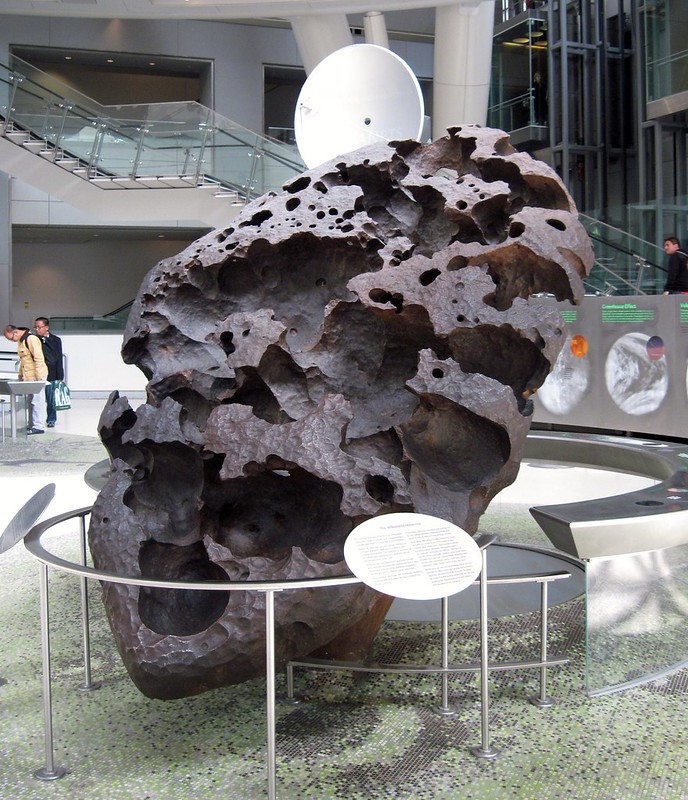
The Willamette Meteorite is the largest meteorite found in the United States and the sixth largest in the world. It is officially named Willamette and was originally known as Tomanowos by the Clackamas Chinook Native American tribe. The meteorite is an iron-nickel meteorite found in the state of Oregon.
The meteorite weighs 15.5 tons and was found in 1902 near Oregon City in Clackamas County. A settler named Ellis Hughes found the meteorite and moved the 15.5-ton iron rock to his own property. The meteorite’s smooth surface melted during its blazing entry into the atmosphere, while the pits formed on the Earth’s surface.
Aside from its size, the striking features of this meteorite are its well-developed nose-cone shape and its deeply pitted rear surface. The Willamette Meteorite is a popular attraction at the American Museum of Natural History in New York City, where it has been on display since 1906.
8. Brenham Meteorite
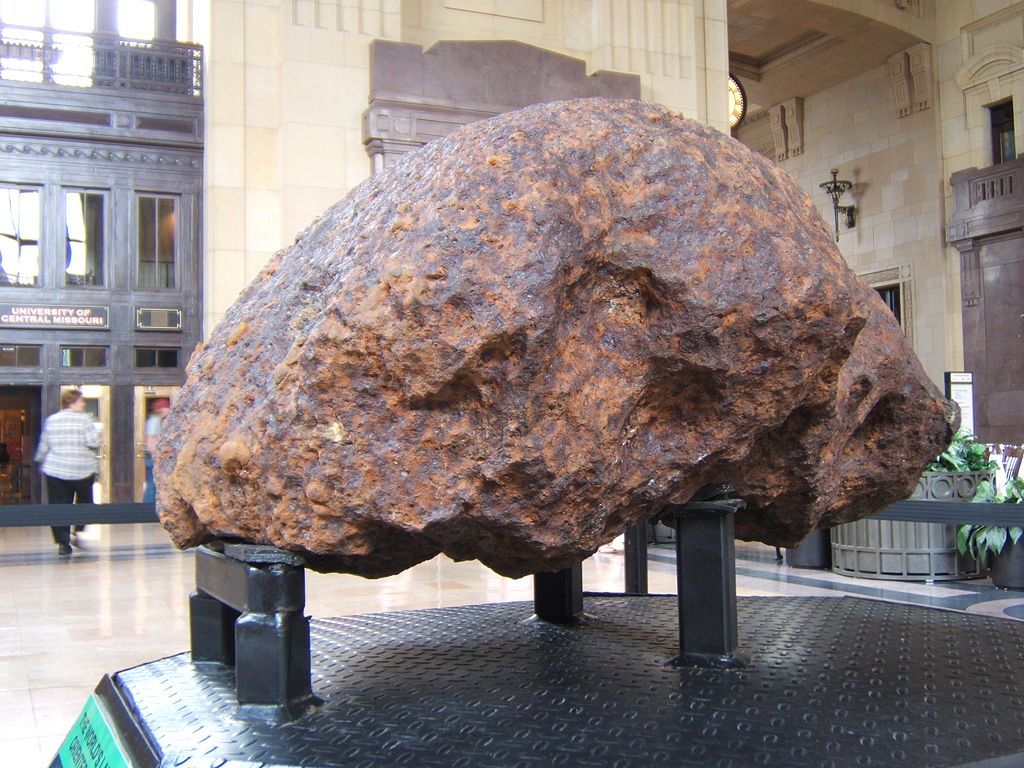
The Brenham Meteorite is a pallasite meteorite found near Haviland, a small town in Kiowa County, Kansas. Pallasites are a type of stony-iron meteorite that when cut and polished, show yellowish olivine (peridot) crystals.
The Brenham meteorite is associated with the Haviland Crater. Pieces of the Brenham meteorite have also been found up to 1,000 miles away. Native American traders transported them and buried them in mounds by the Hopewell people more than 1,500 years ago. Some pieces were pounded into iron knives, ear ornaments, chisels, buttons, and beads.
The Brenham meteorite is classified as a pallasite, which is a rare type of meteorite that is composed of roughly equal parts of metal and silicate minerals. It’s also notable for its beautiful olivine crystals, which are some of the largest and most well-formed of any pallasite meteorite.
In addition to its scientific significance, the Brenham meteorite has also played an important cultural role. Native American peoples used pieces of the Brenham meteorite to create tools, jewelry, and other objects. Today, the Brenham meteorite is on display in museums around the world, where it continues to fascinate scientists and the general public alike.
9. Peekskill Meteorite
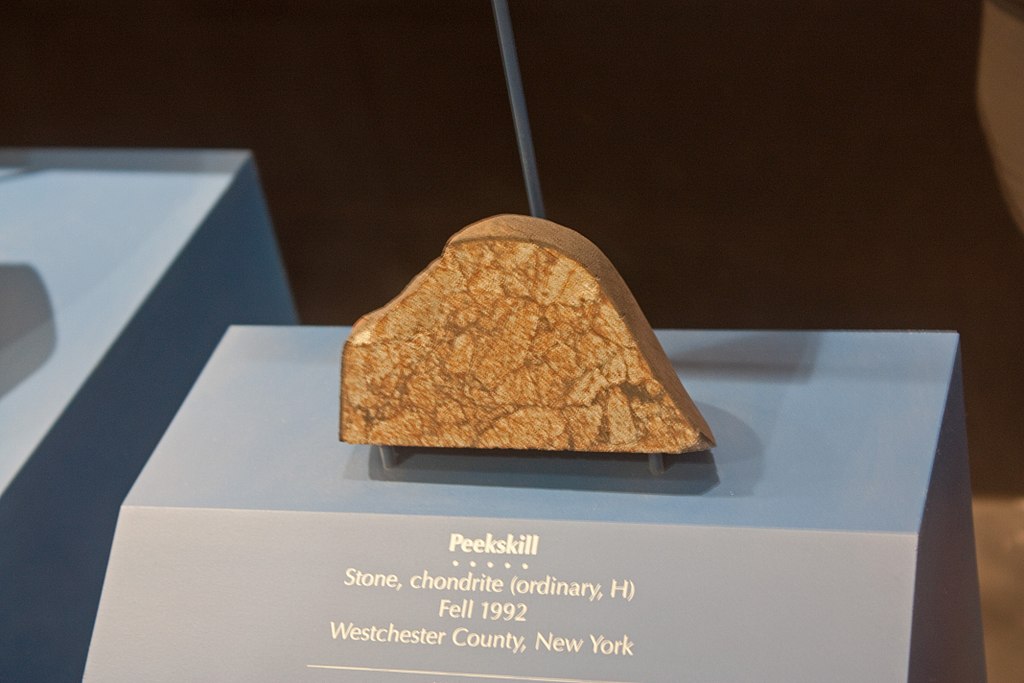
The Peekskill meteorite is one of the most famous meteorites in history. It is named after the town of Peekskill, New York, where it fell on October 9, 1992. The meteorite is estimated to be about 4.4 billion years old and is believed to have originated from the asteroid belt between Mars and Jupiter.
The Peekskill meteorite is particularly famous because it hit a parked car, a red 1980 Chevrolet Malibu, owned by Michelle Knapp. The car was parked in the driveway of Knapp’s home when the meteorite hit it, causing significant damage. The incident was witnessed by many people, and it was captured on video by several cameras.
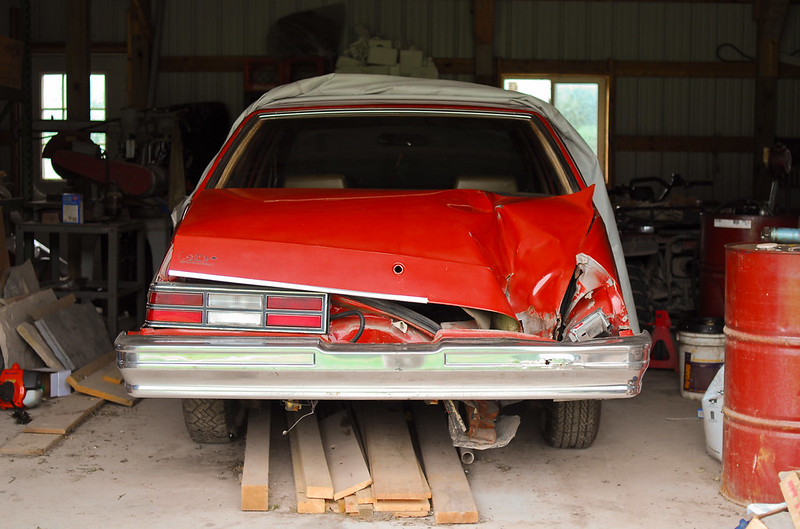
The Peekskill meteorite weighs 27.28 pounds (12.37 kg) and is made of a type of rock called chondrite. Chondrites are some of the oldest and most primitive meteorites, and they are believed to be remnants from the early solar system. The Peekskill meteorite is also notable for its smell of sulfur, which is common in many meteorites.
After the incident, the damaged car and the meteorite became famous, and they were displayed in many museums and exhibitions around the world. The car was eventually sold at an auction for $69,000, and the meteorite is now part of the collection of the American Museum of Natural History in New York City.
10. Campo del Cielo Meteorite
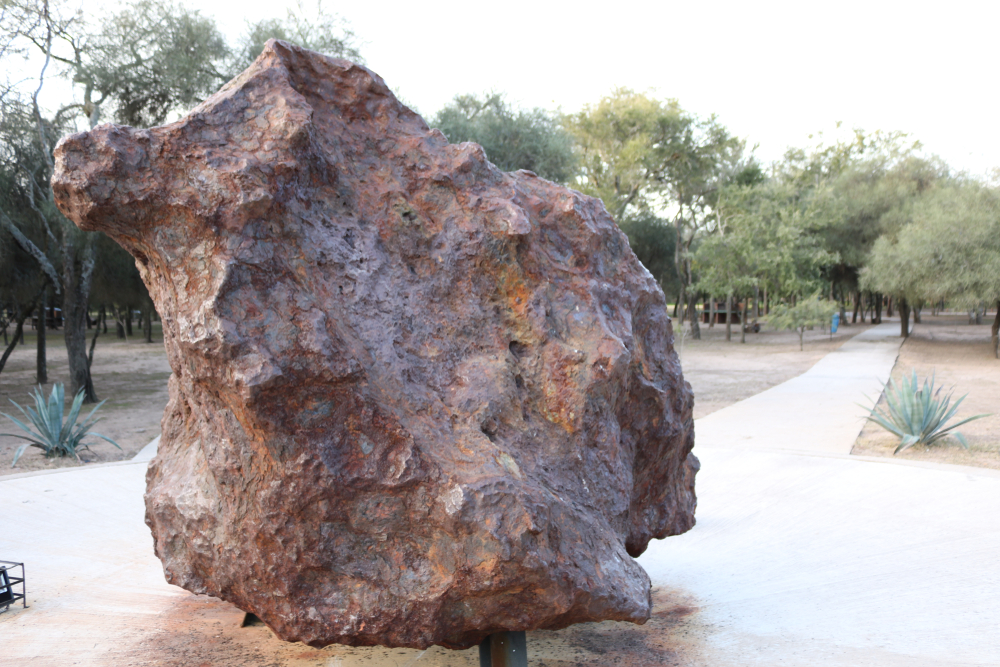
The Campo del Cielo meteorite is a group of iron meteorites that were found in Argentina. The field of impact craters covers an area of 3 km X 20 km and the site contains at least 26 craters, the largest measuring 115 m X 91 m. The meteorite is estimated to have fallen to Earth between 4,000 and 5,000 years ago, and it has been a subject of study and fascination ever since.
One of the most interesting facts about the Campo del Cielo meteorite is that it is the source of the largest-known meteorite of the strewn field. Named the Gancedo meteorite after the nearby town of Gancedo, this nickel-iron meteorite has a mass of 30,800 kilograms (67,900 lb). The extraction of the Gancedo meteorite required the use of heavy equipment and the assistance of the town of Gancedo, which lent equipment to aid in the extraction.
The Campo del Cielo meteorite is also notable for being the subject of theft and controversy. In recent years, there have been reports of illegal mining and theft of the meteorite fragments from the site. The Argentine government has taken measures to protect the site and prevent further theft, but the issue remains a concern.
- Online rock and mineral club for collectors of all levels!
- Find community with like-minded rock and mineral enthusiasts.
- Monthly Giveaways!
- Free Access to Entire Digital Library of Products (current and future products)*


